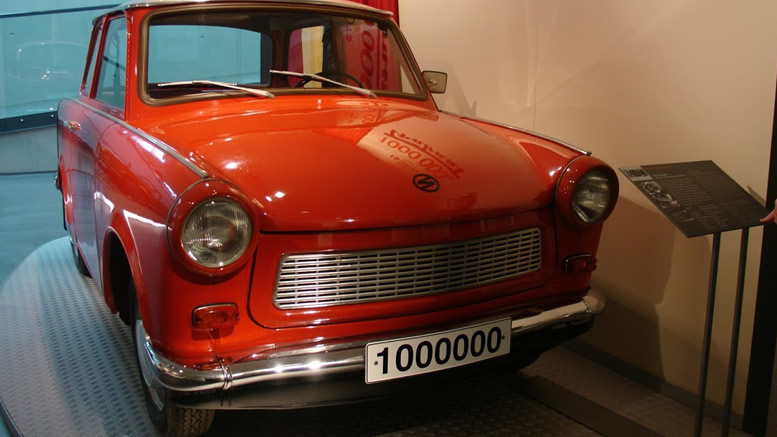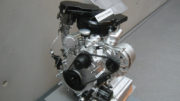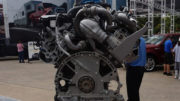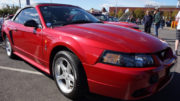 The Trabant was East Germany’s car for East Germans. The Trabant’s was built in a factory were Audi’s were once built before the war. The new company that was started to build the Trabant was named Sachsenring and began building Trabant’s in 1957. Several models were produced but the most famous one was the model 601 that started life in 1967 and was sold until after the fall of the wall relatively unchanged to 1991.
The Trabant was East Germany’s car for East Germans. The Trabant’s was built in a factory were Audi’s were once built before the war. The new company that was started to build the Trabant was named Sachsenring and began building Trabant’s in 1957. Several models were produced but the most famous one was the model 601 that started life in 1967 and was sold until after the fall of the wall relatively unchanged to 1991.
Its styling was very simple and to conserve expensive metal its body was made from a plastic similar to fibreglass called duraplast, The Trabant had a top speed of about 100 kilometres, and its two cylinder two-stroke engine used only 5 moving parts. The engine was so light it could be lifted out by one person, due to it being a two stroke you could cut down on many expensive parts. It did receive a few improvements over its lifetime including improved brakes and electrical systems. Despite their noise and poor performance most people who have owned a Trabant swear by them as they are cheap to run and so simple that there is very little to go wrong with them.
The last upgrade came in 1990, as the west started to see the Trabant emerge from East Germany, the engine was replaced with a four stroke 1.1 VW polo unit. Despite the much needed performance increase the Trabant’s days were numbered. It was no longer being exported to eastern block country’s and now the East Germans had access to many more modern cars.
In 1991 after over 3,096,000 Trabant’s produced the Trabant production stopped. The factory where the Trabant’s were produced in Zwickau was converted into a car museum and The company that produced the Trabant (Sachsenring) moved onto producing parts for other car companies. Today there are now several Trabant car clubs all over the world and good used examples of the Trabant are much sort after, which is amazing how a small terrible car that rarely left the communists states has captured the hearts of car lovers the world over.




